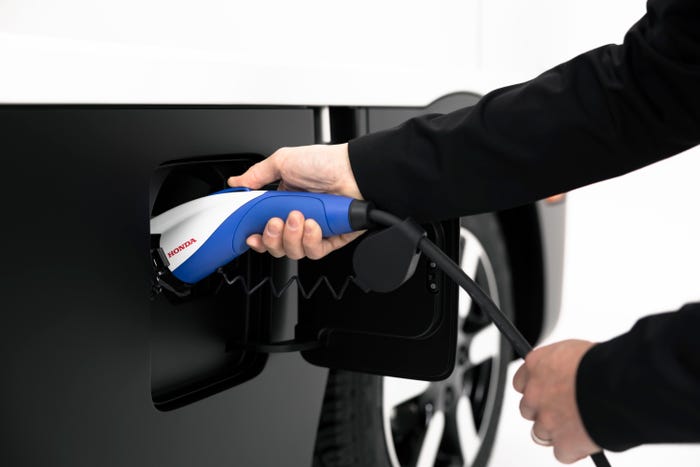Honda Reveals Latest Autonomous Work Vehicle
The AMV prototype is designed for the construction industry and can also be operated by remote control

Honda is set to reveal an upgraded version of its Autonomous Work Vehicle (AWV) prototype at CONEXPO in Las Vegas later in March.
The AWV is aimed at companies seeking to make efficiencies in the construction industry or on worksites and delivers its automated functionality via a suite of sensors, using GPS for location, radar and lidar for obstacle detection and cameras for remote monitoring.
It can also be operated manually via remote control.
The model that will be unveiled at the Vegas show is the third generation of the AWV and features several upgrades from the second-generation version, which was tested extensively at a 1,000-acre solar construction site in New Mexico.
Based on these findings, Honda made a number of improvements.
The lidar sensors are now claimed to include superior navigation in areas where the GNSS (global navigation satellite system) is weak or unavailable, while operation has been made easier via a simplified tablet-based programming interface and cloud connectivity.
On the ground, capability has been enhanced by way of a higher top speed in autonomous mode of 10 mph, and a longer operating time of up to ten hours, courtesy of an increased battery size of 18.6 kWh. There is also what is described as an “enhanced avoidance function” for vehicles stopped on the AWV’s route.
The bed size has been increased to accommodate two pallets, and is now lower for easier loading, while there is a greater weight capacity of around 2,000 pounds.
Electric range is said to be able to reach 28 miles, depending on how the vehicle is being used.

The AWV can cope with both on-road and off-road terrain, and to offer increased versatility, Honda is exploring the development of attachments and tools that could make it suitable for a greater variety of work environments.
“We believe the Honda AWV can be a valuable solution to supporting construction teams while also enhancing worksite efficiencies and safety,” said Jason VanBuren, Honda America systems engineering manager. “Leveraging Honda’s decades of experience developing reliable, safe and clean mobility technology, we aim to address issues such as labor shortages and improved environmental performance.”
Ultimately, Honda aims to commercialize the AWV, and it says it intends to use CONEXPO to connect with more partners for potential field testing. It is also looking to develop plans for product distribution and aftermarket support.
About the Author
You May Also Like








